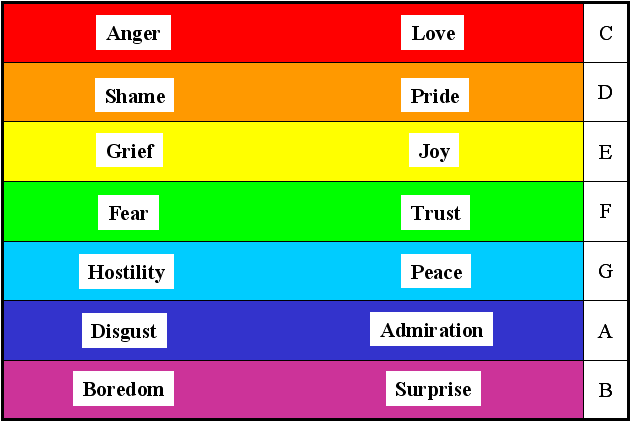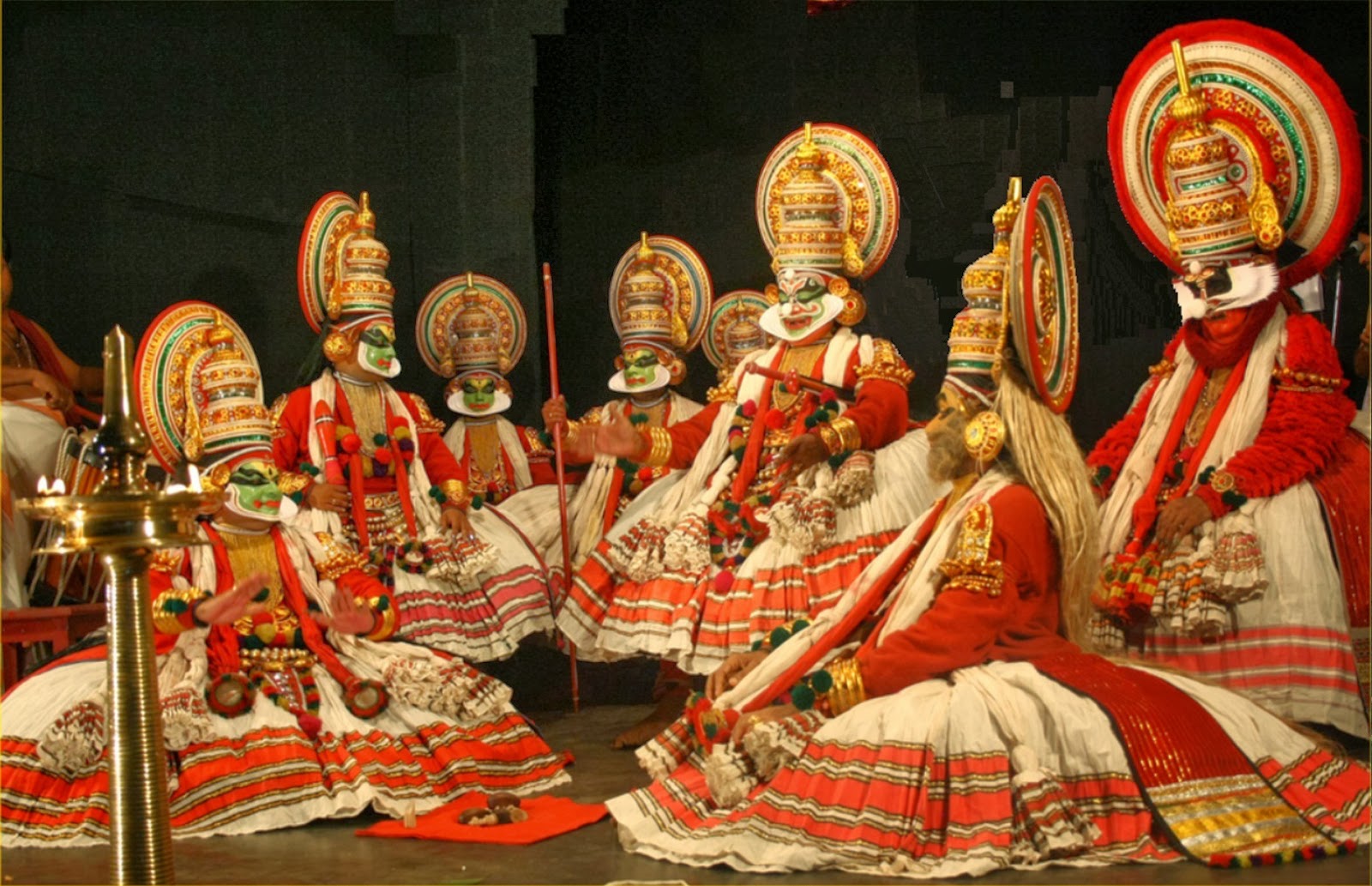what-is-the-navrasa-of-li
In psychology and philosophy, emotion is a partial, conscious experience characterized primarily by psychological expressions, biological reactions, and mental states. Emotion is often associated with mood, outlook, personality, disposition, and motivation. Emotions have given human life a rich foundation which governs their existence. Various activities and happenings govern our emotions. But, can we imagine life without emotions? Emotions add colour and texture to our lives. The routine actions that characterize every day as well as the surprising happenings that make and keep our lives going and they are all threads that get woven together to form the embroidery of our life.
The one thing that is common to all these threads is the fact that they evoke feelings in us, we respond to them with our emotions before they can become a part of our internal life. Indeed, life can be thought of as a continuous sequence of Emotions that arise in various contexts and circumstances. These Emotions are called “Rasas” in Sanskrit which give life different hues, shades and colours. In Sanskrit Rasa means taste or essence and Nava means nine. Rasa is commonly used to denote the sense of an “emotional state.” The nine Rasas were (and are) the strength of character of Indian aesthetics ever since they were symbolized in the Natyasastra (written sometime in 200 BC-300 AD) and they formed the foundation from which the traditions of dance, music, theatre, art and literature evolved.
Concert and artwork were created solely with the aim of evoking the Rasas in the audience. There is rasa in each activity of our life; or better yet, everything that we do “has” Rasa. Some rasas have more significance in our life (depending on our individual character). Though some things have a higher essence, others are lower and some are innate. Rasa is the invisible substance that gives life its meaning.
 The NatyaShastra is an ancient Indian text dated between 2nd century BC and 2nd century AD which analyses all aspects of performing art. It is often called the fifth veda because of its importance. In it one finds a thorough exposition on the rasas, or emotions that characterize Life as well as Art. The NatyaShastra describes nine rasas or NavaRasas that are the basis of all human emotion. Each is commented upon in detail. It is useful to keep in mind that a rasa includes not just the emotion, but also the various things that cause that emotion. These two things go hand in hand and are impossible to treat independently.
The NatyaShastra is an ancient Indian text dated between 2nd century BC and 2nd century AD which analyses all aspects of performing art. It is often called the fifth veda because of its importance. In it one finds a thorough exposition on the rasas, or emotions that characterize Life as well as Art. The NatyaShastra describes nine rasas or NavaRasas that are the basis of all human emotion. Each is commented upon in detail. It is useful to keep in mind that a rasa includes not just the emotion, but also the various things that cause that emotion. These two things go hand in hand and are impossible to treat independently.
The nine Emotions included in Navarasa are Shringara (love), Hasya(laughter), Karuna(kind-heartedness or compassion), Raudra (anger), Veera (courage), Bhayanakara (terror), Bheebhatsya (disgust), Adbutha (surprise) and Shantha (peace or tranquility). These are the emotions that a human shows according to the situations. Scientists have found that every emotion of human evokes a colored aura (halo). The emotional spectrum is divided into the seven colors of the rainbow, with each color corresponding to a different emotion: rage (red), greed (orange), fear (yellow), willpower (green), hope (blue), compassion (indigo), and love (violet). However, it also represents the absence of color (black), which is death, and the combination of colors (white) which is life.
 Shringara: means “Love” and also “Beauty”. It denotes enjoying company of opposite sex. In English it means “Romance.” It is the foundation of man-woman relationship which brings warmth and security of a relationship. Loving and being loved adds richness to our lives. When people feel close to others they are happier and even healthier. Love helps us feel important, understood, and secured. Shringara implies that we must realize that beauty is everywhere and is always there to be loved. Enjoy beauty in others. In Indian mythology, Lord Krishna’s Raas Leela is full of Shringar Rasa. Swami Vivekananda said that the raas leela is an external expression of divine leela which takes place in the heart of each and every individual. Unless we love somebody, have romance, life is unadorned. The Gods showed us that Shringara is divine feeling. Shringara means paying little attention to neatness and tidiness. By adding a little sleekness to our living we can bring harmony in life. Flowers, fragrances, perfumes, colours add Shringara to life. Sringara rasa is depicted by light green color.
Shringara: means “Love” and also “Beauty”. It denotes enjoying company of opposite sex. In English it means “Romance.” It is the foundation of man-woman relationship which brings warmth and security of a relationship. Loving and being loved adds richness to our lives. When people feel close to others they are happier and even healthier. Love helps us feel important, understood, and secured. Shringara implies that we must realize that beauty is everywhere and is always there to be loved. Enjoy beauty in others. In Indian mythology, Lord Krishna’s Raas Leela is full of Shringar Rasa. Swami Vivekananda said that the raas leela is an external expression of divine leela which takes place in the heart of each and every individual. Unless we love somebody, have romance, life is unadorned. The Gods showed us that Shringara is divine feeling. Shringara means paying little attention to neatness and tidiness. By adding a little sleekness to our living we can bring harmony in life. Flowers, fragrances, perfumes, colours add Shringara to life. Sringara rasa is depicted by light green color.
 Hasya: Hasya Rasa is an essential part of the life; what’s life without laughter? Hasya is of two kinds, Atmastha or self-based, Parastha or based in others. The Hasya Rasa is denoted by white colour. When we laugh at ourselves it is called Atmastha and when we make other laugh it is called Parastha. Laughter offers a number of positive organic effects on the human body. It strengthens immune system, reduces cravings and makes people more resistant to pain. Reduces the pressure, stress and increases the flexibility of muscles. The psychological and physical relaxation generated by laughter cannot be replaced by tons of money. It can draw our attention away from things that cause anger, guilt, stress and other negative Emotions. It allows us to see difficult situations with a new perspective, more like a challenge rather than a threat. At the social level, laughter and humor, creates bonds and better relationships with others. Also, because laughter is contagious, if we introduce into our lives more laughter this means that will help others in our environment to laugh more, which will have positive repercussions on many level.
Hasya: Hasya Rasa is an essential part of the life; what’s life without laughter? Hasya is of two kinds, Atmastha or self-based, Parastha or based in others. The Hasya Rasa is denoted by white colour. When we laugh at ourselves it is called Atmastha and when we make other laugh it is called Parastha. Laughter offers a number of positive organic effects on the human body. It strengthens immune system, reduces cravings and makes people more resistant to pain. Reduces the pressure, stress and increases the flexibility of muscles. The psychological and physical relaxation generated by laughter cannot be replaced by tons of money. It can draw our attention away from things that cause anger, guilt, stress and other negative Emotions. It allows us to see difficult situations with a new perspective, more like a challenge rather than a threat. At the social level, laughter and humor, creates bonds and better relationships with others. Also, because laughter is contagious, if we introduce into our lives more laughter this means that will help others in our environment to laugh more, which will have positive repercussions on many level.
 Karuna: means Compassion which I would term as positive feeling. It isthe feeling of empathy for others in response to seeing their suffering; and a desire to help. Compassion when based on rational notions such as fairness, justice and interdependence is beautiful. There is also an aspect of compassion which regards a quantitative dimension, such that individual’s compassion is often given a property of “depth,” “vigour,” or “enthusiasm.” The negative Bhavas of Karuna rasa are dejectedness, indifference, lethargy, anxiety, yearning excited state, illusion, loss of sense, sadness, ailments, sluggishness, epileptic loss of memory, fear, death, paralysis, tremor, pallor in the face, shedding of tears, loss of speech and the kindred feelings. The NatyaShastra states that the Karuna Rasa takes its origin through different Bhavas either at the sight of the death, murder, torture, or anguish. It is expressed as crying, speechlessness, sighs, expression of grief, loss of sense, weeping bitterly and other similar gestures. Karuna rasa is depicted in Grey color.
Karuna: means Compassion which I would term as positive feeling. It isthe feeling of empathy for others in response to seeing their suffering; and a desire to help. Compassion when based on rational notions such as fairness, justice and interdependence is beautiful. There is also an aspect of compassion which regards a quantitative dimension, such that individual’s compassion is often given a property of “depth,” “vigour,” or “enthusiasm.” The negative Bhavas of Karuna rasa are dejectedness, indifference, lethargy, anxiety, yearning excited state, illusion, loss of sense, sadness, ailments, sluggishness, epileptic loss of memory, fear, death, paralysis, tremor, pallor in the face, shedding of tears, loss of speech and the kindred feelings. The NatyaShastra states that the Karuna Rasa takes its origin through different Bhavas either at the sight of the death, murder, torture, or anguish. It is expressed as crying, speechlessness, sighs, expression of grief, loss of sense, weeping bitterly and other similar gestures. Karuna rasa is depicted in Grey color.
Rudra: In English  it means Anger. It is one of the negative Emotions. There are two types of angers. The first being destructive anger and exists for the sake of itself. The second being constructive anger where it is born out of an injustice or dissatisfaction and a will to make a change towards a positive. Anger is a normal emotion with a wide range of intensity, from mild irritation and frustration to rage. It is a reaction to a perceived threat to us, our loved ones, our property, our self-image, or some part of our identity. Anger is a warning bell that tells us that something is wrong. Everyone experiences anger, and a little amount of it can be healthy. It can motivate us to stand up for ourselves and correct injustices. When we manage anger well, it makes positive changes in our lives and situations. Raudra Rasa and Karuna Rasa are similar as both can be the consequence of some deprivation. The outcome of deprivation in Karuna is loss of hope and resignation and in Raudra it is rage. Lord Shiva is famous for his “Rudravtar”. The outcome Rudra Rasa are Krodha (anger), Dharsana (violation of modesty), Adhiksepa (abuse), Apamana (insult), Anrtavacana (uttering falsehoods), Vakparusya (Harsh words), Droha (animosity), Matsarya (jealousy) and kindred ones. The activities connected with Raudra Rasa are beating, tearing, harassing, chopping off, breaking, piercing, striking hurling missiles, shedding blood, seizing of weapons and similar activities. Rudra Rasa is portrayed in red color.
it means Anger. It is one of the negative Emotions. There are two types of angers. The first being destructive anger and exists for the sake of itself. The second being constructive anger where it is born out of an injustice or dissatisfaction and a will to make a change towards a positive. Anger is a normal emotion with a wide range of intensity, from mild irritation and frustration to rage. It is a reaction to a perceived threat to us, our loved ones, our property, our self-image, or some part of our identity. Anger is a warning bell that tells us that something is wrong. Everyone experiences anger, and a little amount of it can be healthy. It can motivate us to stand up for ourselves and correct injustices. When we manage anger well, it makes positive changes in our lives and situations. Raudra Rasa and Karuna Rasa are similar as both can be the consequence of some deprivation. The outcome of deprivation in Karuna is loss of hope and resignation and in Raudra it is rage. Lord Shiva is famous for his “Rudravtar”. The outcome Rudra Rasa are Krodha (anger), Dharsana (violation of modesty), Adhiksepa (abuse), Apamana (insult), Anrtavacana (uttering falsehoods), Vakparusya (Harsh words), Droha (animosity), Matsarya (jealousy) and kindred ones. The activities connected with Raudra Rasa are beating, tearing, harassing, chopping off, breaking, piercing, striking hurling missiles, shedding blood, seizing of weapons and similar activities. Rudra Rasa is portrayed in red color.
 Veera: In English it is heroism. The Veera rasa is all about bravery, fearlessness, determination, boldness, self- confidence and grit. It is our willingness to venture out and do the right thing at the right time, despite the barriers we may encounter. Boldness enables us to speak the truth, and perform a task without fear of the consequences or results, because, it is the right, thing to do. In battle, the attitude of boldness is shown in a way with which warriors go to war, and the valors with which they die. We always like bold leaders; it is the most vital quality of a leader. In the Hindu mythology, Abhimanyu displayed a different type of heroism when he went to war knowing fully that he would be severely outnumbered and almost certainly die and yet fought so bravely till his last. In Sattriya Dance and culture, the Veera Rasa is displayed in various characters in Keli Gopal, Kaliyadaman, Patni Prasad, Parijat Haran, Rukmini Haran, Rambijay, Arjun Bhanjan etc. The foundation of civil defense is based upon Veera Rasa. Orange color depicts Veera rasa.
Veera: In English it is heroism. The Veera rasa is all about bravery, fearlessness, determination, boldness, self- confidence and grit. It is our willingness to venture out and do the right thing at the right time, despite the barriers we may encounter. Boldness enables us to speak the truth, and perform a task without fear of the consequences or results, because, it is the right, thing to do. In battle, the attitude of boldness is shown in a way with which warriors go to war, and the valors with which they die. We always like bold leaders; it is the most vital quality of a leader. In the Hindu mythology, Abhimanyu displayed a different type of heroism when he went to war knowing fully that he would be severely outnumbered and almost certainly die and yet fought so bravely till his last. In Sattriya Dance and culture, the Veera Rasa is displayed in various characters in Keli Gopal, Kaliyadaman, Patni Prasad, Parijat Haran, Rukmini Haran, Rambijay, Arjun Bhanjan etc. The foundation of civil defense is based upon Veera Rasa. Orange color depicts Veera rasa.
 Bhayanaka: In English it is terror. The Bhayanaka Rasa depicts fear, worries, fretfulness and anxiety, https://livingwellnessmedicalcenter.com/ativan-lorazepam/. Bhayanaka is a feeling evoked while facing something that is powerful than oneself, it’s a feeling of being helpless. The main cause of terrorism is the political and economical exploitation of oppressed majority by the people who enjoy the power of ruling. Present day concept of terrorism is based on duplicity; one man’s terrorism is other man’s freedom fight. Angst, fear, phobia and distress are the outcomes of terror. The modern definition of terrorism refers to criminal or illegal acts of violence at randomly chosen targets, in an effort to raise fear. It is practiced by extremist groups with a limited political base or parties on the weaker side in asymmetric warfare. To keep the law and order in place terror is practiced, usually within the legal framework of the state; we see shades of it to terrorize the criminas. The black color depicts bhayanaka rasa.
Bhayanaka: In English it is terror. The Bhayanaka Rasa depicts fear, worries, fretfulness and anxiety, https://livingwellnessmedicalcenter.com/ativan-lorazepam/. Bhayanaka is a feeling evoked while facing something that is powerful than oneself, it’s a feeling of being helpless. The main cause of terrorism is the political and economical exploitation of oppressed majority by the people who enjoy the power of ruling. Present day concept of terrorism is based on duplicity; one man’s terrorism is other man’s freedom fight. Angst, fear, phobia and distress are the outcomes of terror. The modern definition of terrorism refers to criminal or illegal acts of violence at randomly chosen targets, in an effort to raise fear. It is practiced by extremist groups with a limited political base or parties on the weaker side in asymmetric warfare. To keep the law and order in place terror is practiced, usually within the legal framework of the state; we see shades of it to terrorize the criminas. The black color depicts bhayanaka rasa.
 Beebhatsya: is disgust in English. Vulgar and uncivilized acts, usage of bad words and manners evoke an unpleasant feeling which is Beebhatshya. The feeling of disgust in the mind of Prince Siddhartha towards sickness, old age and death later transformed him into Buddha which is one of the avatars of Lord Vishnu. Blue is the color of Beebhatsya. It is a feeling of revulsion or strong disapproval aroused by something unpleasant or offensive. Disgust is a strong negative feeling of aversion or disapproval. Disgust is not just a physical sensation; it’s a powerful emotional warning sign.
Beebhatsya: is disgust in English. Vulgar and uncivilized acts, usage of bad words and manners evoke an unpleasant feeling which is Beebhatshya. The feeling of disgust in the mind of Prince Siddhartha towards sickness, old age and death later transformed him into Buddha which is one of the avatars of Lord Vishnu. Blue is the color of Beebhatsya. It is a feeling of revulsion or strong disapproval aroused by something unpleasant or offensive. Disgust is a strong negative feeling of aversion or disapproval. Disgust is not just a physical sensation; it’s a powerful emotional warning sign.
 Adbhuta: is amazement in English. Adbhuta is the rasa of curiosity, astonishment and wonder. The feeling when one comes across something divine and supernatural, something never seen or imagined before is Adbhuta. When we understand that there are things that we do not understand, it makes life beautiful and exciting, full of wonders to explore, full of opportunity for new understanding and personal growth. Wonder comes at the beginning of the spiritual journey, the journey to find real truth and solve the mystery of life. Life has much astonishment to offer. Take a look at the clouds, the colors of sky at sunset and sunrise. Look at the plants, trees, leaves, and flowers and how they sway when wind blows. Look at numerous forms of life insects, animals, birds and humans. There is so much to feel astonished. People who have visited the Mansorovar trip say it is full of astonishments. On a personal level there are physical challenges that await us and situations where our mental and emotional makeup becomes apparent. Adbhuta Rasa is depicted by yellow color.
Adbhuta: is amazement in English. Adbhuta is the rasa of curiosity, astonishment and wonder. The feeling when one comes across something divine and supernatural, something never seen or imagined before is Adbhuta. When we understand that there are things that we do not understand, it makes life beautiful and exciting, full of wonders to explore, full of opportunity for new understanding and personal growth. Wonder comes at the beginning of the spiritual journey, the journey to find real truth and solve the mystery of life. Life has much astonishment to offer. Take a look at the clouds, the colors of sky at sunset and sunrise. Look at the plants, trees, leaves, and flowers and how they sway when wind blows. Look at numerous forms of life insects, animals, birds and humans. There is so much to feel astonished. People who have visited the Mansorovar trip say it is full of astonishments. On a personal level there are physical challenges that await us and situations where our mental and emotional makeup becomes apparent. Adbhuta Rasa is depicted by yellow color.
 Shanta: In English it is tranquility. Shanta is the rasa of tranquility and peace. It represents the state of calm and untroubled steadiness. Shanta represents complete harmony between the mind, body and universe. Shanta is what Buddha felt when he was enlightened that led him to salvation or nirvana which freed him from the cycle of life and death. With all the advancement of science, no remedy has yet been found for lack of inner peace and tranquility. Often, even when being in good financial condition and in good health, people have no peace of mind, which only proves that peace of mind does not depend on external conditions or on any scientific or technical progress. The solution has to come from within, not through external means. The color of Shanta Rasa is white.
Shanta: In English it is tranquility. Shanta is the rasa of tranquility and peace. It represents the state of calm and untroubled steadiness. Shanta represents complete harmony between the mind, body and universe. Shanta is what Buddha felt when he was enlightened that led him to salvation or nirvana which freed him from the cycle of life and death. With all the advancement of science, no remedy has yet been found for lack of inner peace and tranquility. Often, even when being in good financial condition and in good health, people have no peace of mind, which only proves that peace of mind does not depend on external conditions or on any scientific or technical progress. The solution has to come from within, not through external means. The color of Shanta Rasa is white.
Naturalist Charles Darwin believed that emotions are adaptations that allow both humans and animals to survive and reproduce. When we are angry, we are likely to confront the source of our irritation. When we experience fear, we are more likely to flee the situation or threat. When we feel love, we might seek out a mate and reproduce. Emotions serve an adaptive role in our lives by motivating us to act quickly and take actions that will maximize our chances for success.
fe














































